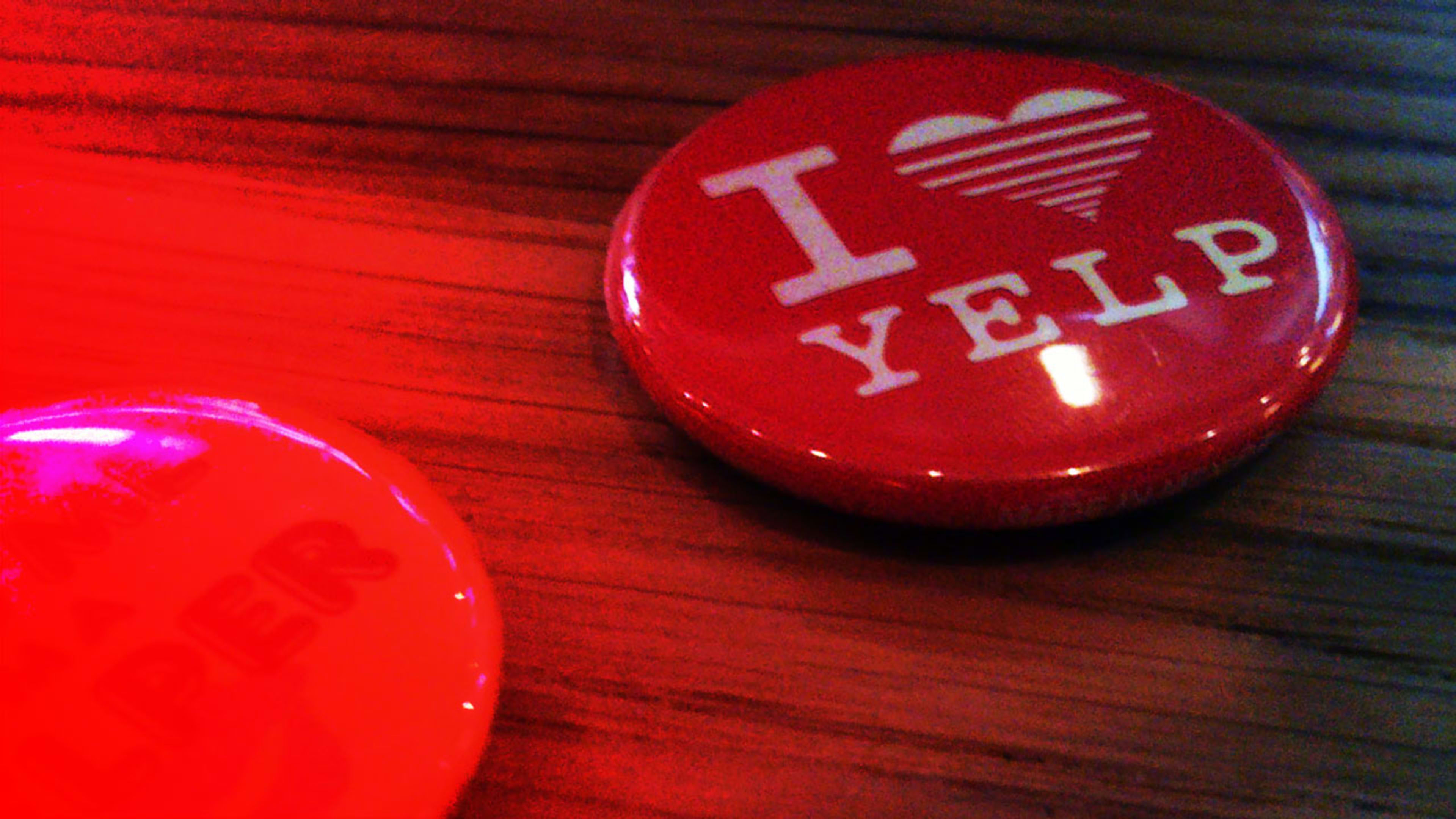If there were a Hall of Fame for the internet’s most comfortably familiar offerings, Yelp would be a first-ballot inductee. The service, which is about to turn 15—it went live in October 2004—has long been synonymous with user reviews (almost 200 million of them to date) and facts about restaurants and other local businesses, with a down-to-earth vibe and aesthetic that have remained remarkably consistent over the years. Even its logo is just a cleaned-up version of the one it adopted early on. The experience it delivers is the digital equivalent of a favorite pair of shoes.
But in a way, it’s been a pair of shoes that only came in one size. Everybody perusing businesses in the same area has gotten the same search results and recommendations, as if people didn’t have wildly different preferences based on an array of factors. Now Yelp is introducing a significant new twist to the way it helps match up consumers and businesses. The app will let you specify dozens of things about yourself—from a love of BBQ to a desire for gender-neutral restrooms—and will take these items into account.
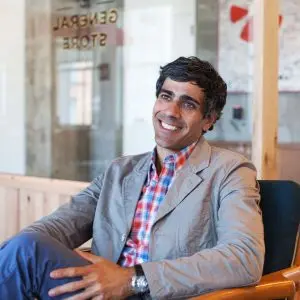
Though it took Yelp a while to get around to building these new features, the company hasn’t exactly been lounging about. For all the ways in which the service has stayed recognizably itself, it’s also been building out functionality that helps consumers do much more than identify a tasty-yet-affordable sushi joint and verify that it’s open. Today’s Yelp will also let you get on the wait list for that restaurant before you’ve left home. And make appointments with businesses such as skincare clinics. And request quotes from specialists like tree-removal services.
These offerings are catching on. For instance, 2.4 million users a month make restaurant reservations or wait list requests, while 2.2 million request quotes for services. Still, the service’s reputation hasn’t quite caught up with the fleshed-out new reality. “Many people out there think of Yelp as, ‘Oh, that’s the place that you got restaurant reviews and ratings,'” says chief product officer Vivek Patel, a 10-year veteran of the company. “And it’s true, you can find really trustworthy reviews and ratings. But we’re trying to evolve from that to being a place where you can also discover businesses, connect with those businesses, and even transact with those businesses.”
The new personalization features fall into the “discovery” segment of that journey, which remains critical—after all, people are far more likely to contact or do business with a restaurant, merchant, or service provider if it looks exactly like what they’re looking for.
“Throughout the years, if you were doing the same search in the same spot, you would get the same results, but everyone’s different,” says Patel. “Everyone has different tastes, and I think we can do a lot to help surface the things that resonate with people, at that moment in that context.” (The new personalization features are premiering in full-blown form in the Yelp iPhone app; Android is getting a subset and a promise of parity down the road.)
State your preferences
For Yelp, implementing personalization involved two challenges in one, says Stoppelman. “One, how do you gracefully gather information from users in a way that they’ll find acceptable and comfortable? And then what are the different ways that you can surface ideas and suggestions that are in context for what the person is trying to do? So you’re not just like, ‘I’m looking for a park.’ And we’re like, ‘Oh, hey, there’s a vegan restaurant over here!'”
The information-gathering approach Yelp settled on is about as straightforward as it could possibly be. The company isn’t throwing AI at your clicks or mining your personal data to determine what kind of food you like or home services you might pay for. Instead, it just asks you, via an invitation on the app’s home screen. In 60 seconds or so of tapping, you can tell Yelp that you follow a keto diet and care about wheelchair accessibility; own a car and a home; and are fond of bookstores, bowling, and beaches.
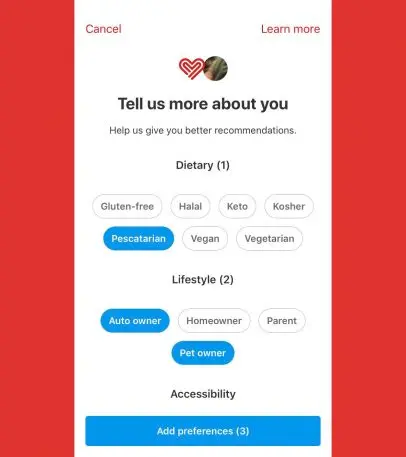
Once you make your preferences known, they play a role in the businesses that Yelp brings to your attention. Rather than making this process feel invisible, the app goes to lengths to call it out, using a heart icon to flag each instance. If you identified yourself as a pescatarian and Yelp is recommending an eatery based on it offering many fish options—or at least some of them—it’ll say so. A “Picks for You” section on the home screen also states that it’s drawing on the data you provided about your needs and wishes.
As helpful as it is to know a bit about the user, Yelp does need to weave preference data together with other factors—such as the current wait time at nearby restaurants—to make the most effective possible recommendations. Sometimes, a fact you stated about yourself may not even come into play. “When you’re looking for lunch in the middle of the workday, you being a parent doesn’t matter as much,” explains director of consumer product Akhil Ramesh.
It’s not that Yelp is trying to strip all the serendipity out of the act of finding stuff in the app, which is still full of recommendations that don’t draw on the new personalization data, including collections with names such as (in my case) “Explore SF’s Sunset District” and “SF’s Sought-After Seats.” When I test-drove the new version, it also continued to spotlight a fair amount of stuff I’ll never investigate under any circumstances, like eyebrow-threading establishments, spas, and nail salons—even though I hadn’t selected the associated categories in the personalization checklist.
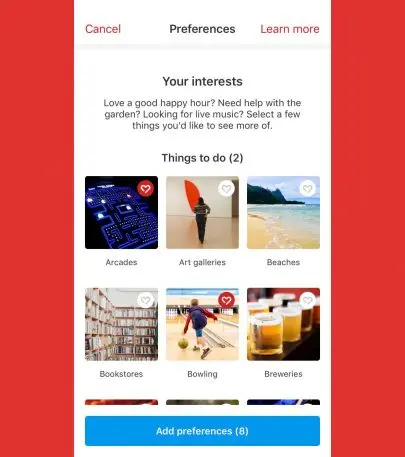
Then again, the company isn’t pitching what it’s built as being immediately transformative. Instead, it’s just the first rough draft of a personalized Yelp, with more to come. “This foundation is going to help us launch into all the other use cases in an elegant, relevant way,” says Ramesh.
Another avenue for further investigation is using the personalization platform to add sophistication to Yelp’s ad experience. For now, the company is just doing some basic matching of stated preferences with available advertisers. “Certainly, if you’re searching for restaurants and we know that you’re a vegan and there’s a vegan restaurant that’s an advertiser, that would be a better match of an ad, but that’s not the driving force,” says Stoppelman.
Getting transactional
Beyond Yelp’s new personalization engine, the company’s big emphasis these days is insinuating itself in the relationship between consumers and businesses in ways that go far beyond providing trusty reviews and ratings. It’s chosen two principal areas of focus, one of which is restaurants; it would be weird if they weren’t a priority for the company.
The restaurant push has been in progress for years. In 2013, Yelp bought reservation service SeatMe; it added wait list manager Nowait four years later. These two acquisitions formed the basis of features within the Yelp app for booking tables, checking on wait times, and putting yourself on the list.
Yelp’s biggest investment in helping restaurants do business with diners, its $134 million purchase of food delivery service Eat24 in 2017, turned out to be a detour. In August 2017, the company flipped Eat24 to delivery behemoth GrubHub for $288 million and integrated GrubHub’s platform into the Yelp experience. “We learned more and more about the delivery network side of the business, and how that was transforming food delivery,” says Stoppelman. “And we also saw that it was going to be very challenging economics. We were going to be competing with the likes of Uber for drivers.”
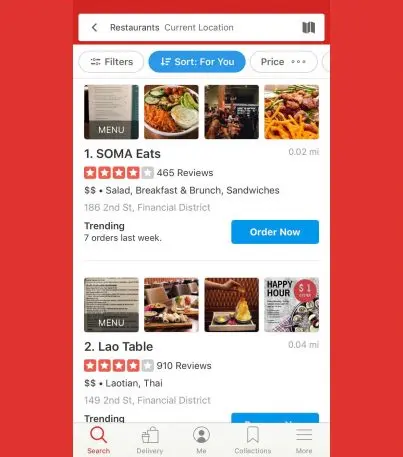
Early this month, Yelp’s relationship with GrubHub became a flashpoint of controversy when Vice’s Adrianne Jeffries reported that it permitted GrubHub to silently disintermediate diners from local restaurants. In some cases, when Yelp users pressed a button to place a telephone order, they were routed through tracking phone numbers that allowed GrubHub to take a commission on the transaction—rather than sending orders directly to establishments and allowing them to pocket all the money. The restaurants in question had marketing agreements with GrubHub, but in retrospect, Yelp says, the arrangement could have been clearer to both businesses and customers. It’s updated its app to show that such transactions are “Powered by GrubHub.”
Along with restaurants, Yelp calls the other area it’s focusing on “home and local,” a blanket term for a profusion of specialized service providers. “It has about 300 categories on its own,” says Raj Subbiah, Yelp’s VP of product, marketplaces. “Anything from a mover to a carpet cleaner to a contractor, plumber, electrician, roofer.” In other words, it’s a vertical consisting of verticals, giving Yelp plenty of potential clients—and work to do—before it needs to widens its ambitions further.
Yelp isn’t trying to satisfy the wildly varying needs of this diverse range of businesses on its own. Instead, it’s partnering with other companies that have divvied off niches, including Unpakt (movers), Delivery.com (laundry), Vagaro (spas and salons), RepairPal (auto repair), and such self-explanatory outfits as Doctor.com and 1800-Dentist. Their rosters of participating businesses and systems for tasks such as scheduling appointments plug in to Yelp through the Yelp Transaction Platform.
How Yelp makes money from its various business services varies. Restaurants pay $249 a month for Yelp Reservations, which they manage via an app that works on an iPad or in a web browser. The company also gets a cut of revenue realized by partners such as GrubHub. On the other hand, the Request-a-Quote feature is free—but integrated with Yelp’s advertising platform, giving service providers another incentive to pay for promotion.
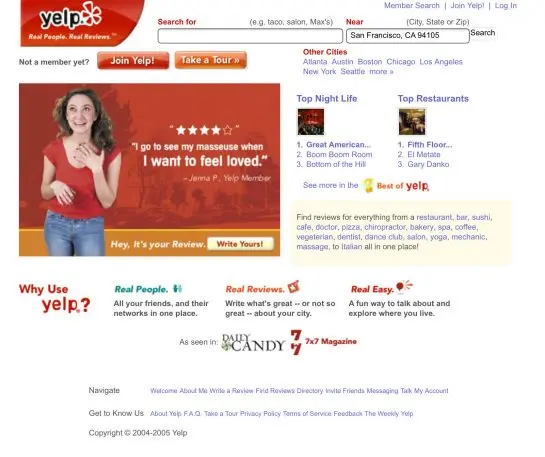
Everything Yelp is currently tackling feels utterly logical. It’s only earned the right to do so by remaining the standard in local-info providers for so long despite scads of competition. It succeeded where 1990s proto-Yelps such as CitySearch and Microsoft’s Sidewalk (not to be confused with Alphabet’s Sidewalk Labs) had failed. It rose above a number of rivals founded around the same time that it was, such as Judy’s Book and Insider Pages. Stoppelman also points to Foursquare and Groupon as one-time rivals that didn’t turn out to be long-term threats. “There’s no shortage of different players that have come and gone, but we’re still standing,” he says.
Yelp is still doing battle with its most persistent bête noire, Google, which licensed Yelp’s data early on, later offered to buy the company outright, and then took it on directly—a move that Yelp has long argued amounts to an abuse of Google’s search monopoly. Then there’s Facebook, which lately been advocating for the idea that the perfect venue for consumers and local businesses to come together is within a messaging app—such as its own Messenger and WhatsApp, both of which boast user bases many times the size of Yelp’s.
Stoppelman says that he isn’t intimidated by the sheer volume of eyeballs a competitor may have corralled. “The beauty of Yelp is that it is one of the main starting points, particularly in the app, for finding a local business,” he argues. “Whereas you don’t necessarily go to Facebook with the intention of getting a plumber to solve your clogged toilet needs.”
People do come to Yelp for their clogged toilet needs and a whole lot more. A future version of the service that’s even more personal and transactional could feel magical in a way that the current Yelp, for all its usefulness, does not. Subbiah envisions a day when putting yourself on a restaurant’s wait list automatically alerts the establishment to your allergies. Or when Yelp knows when it’s time to get your gutters cleaned and finds someone to do it. Or remembers that your dog needs vaccines and lines up a vet appointment. It could be great for everyone involved: consumers, businesses, and Yelp.
“That’s what we’re heading towards,” he says. “And that’s the most exciting part of all of this.”
Recognize your brand’s excellence by applying to this year’s Brands That Matter Awards before the early-rate deadline, May 3.
